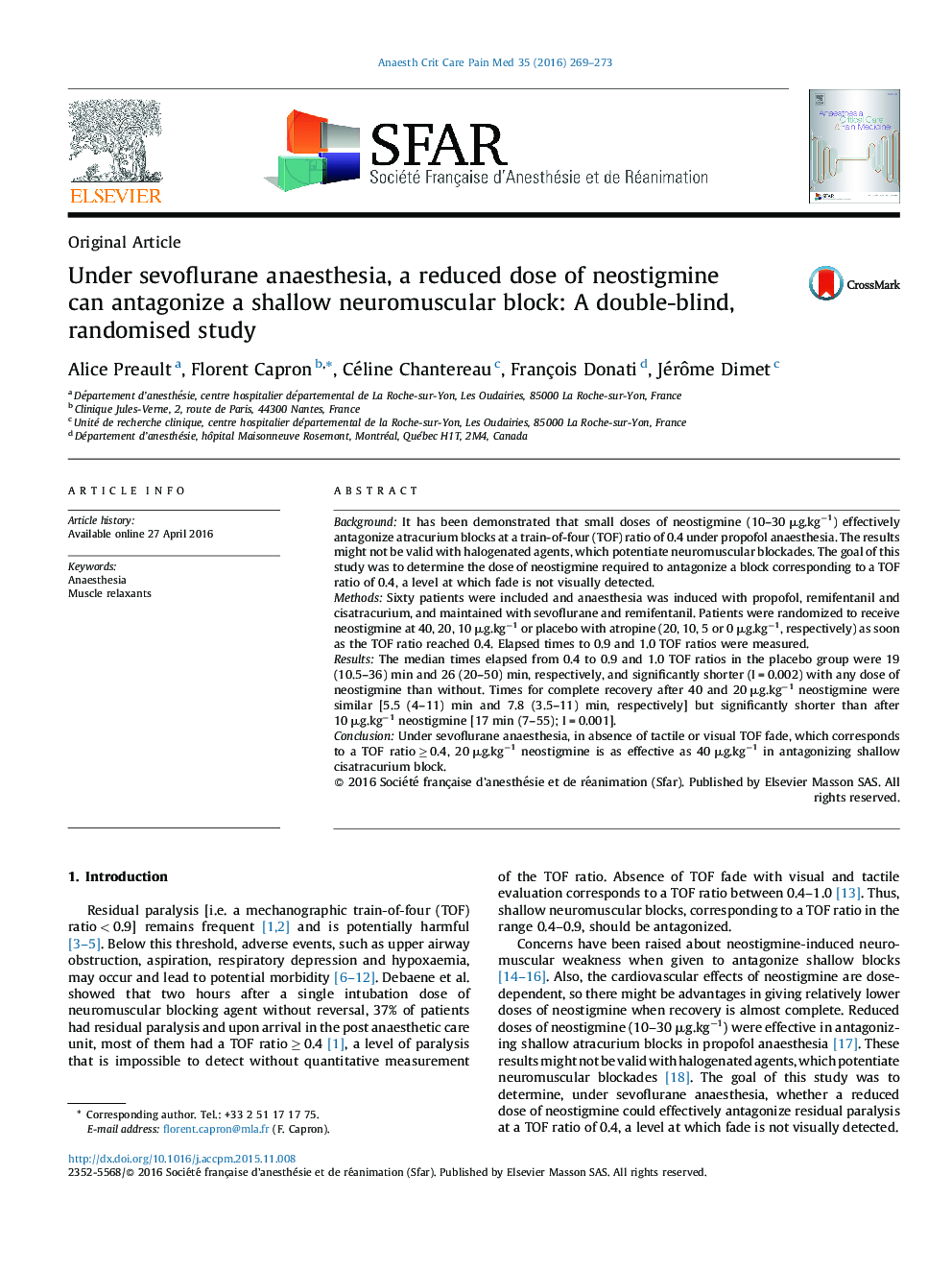| Article ID | Journal | Published Year | Pages | File Type |
|---|---|---|---|---|
| 2741865 | Anaesthesia Critical Care & Pain Medicine | 2016 | 5 Pages |
BackgroundIt has been demonstrated that small doses of neostigmine (10–30 μg.kg−1) effectively antagonize atracurium blocks at a train-of-four (TOF) ratio of 0.4 under propofol anaesthesia. The results might not be valid with halogenated agents, which potentiate neuromuscular blockades. The goal of this study was to determine the dose of neostigmine required to antagonize a block corresponding to a TOF ratio of 0.4, a level at which fade is not visually detected.MethodsSixty patients were included and anaesthesia was induced with propofol, remifentanil and cisatracurium, and maintained with sevoflurane and remifentanil. Patients were randomized to receive neostigmine at 40, 20, 10 μg.kg−1 or placebo with atropine (20, 10, 5 or 0 μg.kg−1, respectively) as soon as the TOF ratio reached 0.4. Elapsed times to 0.9 and 1.0 TOF ratios were measured.ResultsThe median times elapsed from 0.4 to 0.9 and 1.0 TOF ratios in the placebo group were 19 (10.5–36) min and 26 (20–50) min, respectively, and significantly shorter (I = 0.002) with any dose of neostigmine than without. Times for complete recovery after 40 and 20 μg.kg−1 neostigmine were similar [5.5 (4–11) min and 7.8 (3.5–11) min, respectively] but significantly shorter than after 10 μg.kg−1 neostigmine [17 min (7–55); I = 0.001].ConclusionUnder sevoflurane anaesthesia, in absence of tactile or visual TOF fade, which corresponds to a TOF ratio ≥ 0.4, 20 μg.kg−1 neostigmine is as effective as 40 μg.kg−1 in antagonizing shallow cisatracurium block.
